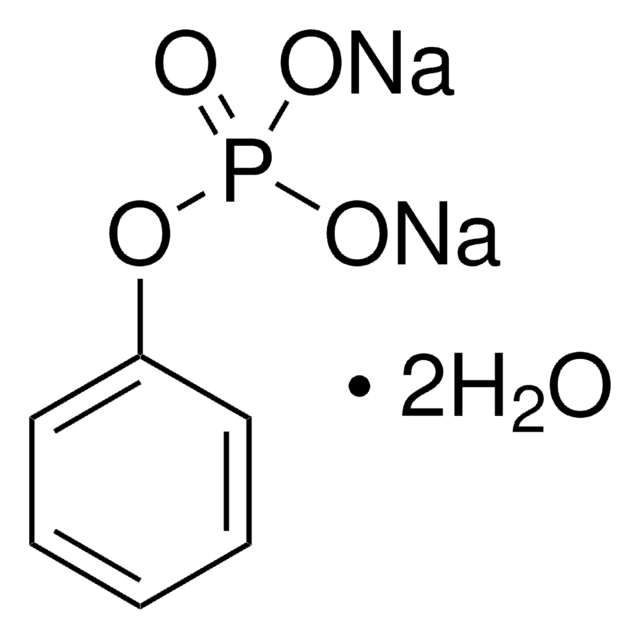P29006
Phenylphosphonic acid
98%
Synonym(s):
Benzene phosphonic acid
About This Item
Recommended Products
Assay
98%
form
crystals
mp
162-164 °C (lit.)
SMILES string
OP(O)(=O)c1ccccc1
InChI
1S/C6H7O3P/c7-10(8,9)6-4-2-1-3-5-6/h1-5H,(H2,7,8,9)
InChI key
QLZHNIAADXEJJP-UHFFFAOYSA-N
Looking for similar products? Visit Product Comparison Guide
Related Categories
Application
Noyori Oxidation (Sodium Tungstate Dihydrate, Hydrogen Peroxide, Methyltri-n-octylammonium Hydrogen Sulfate, Phosphonic Acid)
Signal Word
Danger
Hazard Statements
Precautionary Statements
Hazard Classifications
Acute Tox. 4 Oral - Skin Corr. 1B
Storage Class Code
8A - Combustible corrosive hazardous materials
WGK
WGK 3
Flash Point(F)
Not applicable
Flash Point(C)
Not applicable
Personal Protective Equipment
Certificates of Analysis (COA)
Search for Certificates of Analysis (COA) by entering the products Lot/Batch Number. Lot and Batch Numbers can be found on a product’s label following the words ‘Lot’ or ‘Batch’.
Already Own This Product?
Find documentation for the products that you have recently purchased in the Document Library.
Customers Also Viewed
Our team of scientists has experience in all areas of research including Life Science, Material Science, Chemical Synthesis, Chromatography, Analytical and many others.
Contact Technical Service













